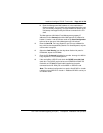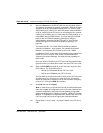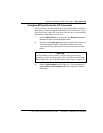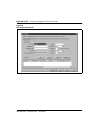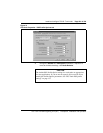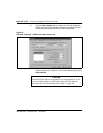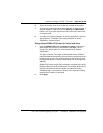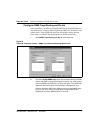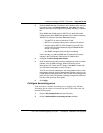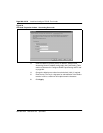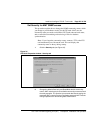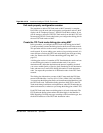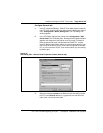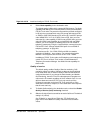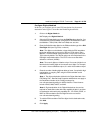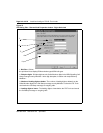
Install and configure ITG ISL Trunk node Page 205 of
378
ITG Trunk 2.0 ISDN Signaling Link (ISL) Description, Installation and Operation
3 Enter the SNMP Manager IP address in the IP Address field, and enter
the Subnet mask in the Subnet mask field. Click Add. The new IP
address and subnet mask appears in the SNMP Manager IP address
list.
Enter SNMP trap IP addresses for MAT PCs on local and remote
subnets and any other SNMP Management PCs for Alarm monitoring.
All MAT PCs must have the Alarm Notification feature.
• The MAT PC on the local subnet or E-LAN.
• MAT PC on a remote subnet on the customer’s IP network.
• Remote support MAT PC PPP IP address (on the E-LAN)
configured in the Nortel Networks Netgear RM356 Modem
Router, or equivalent
• Any SNMP managers for remote alarm monitoring
In the next step, you add the SNMP trap IP addresses for remote
subnets in the Card Routing Table entries IP address field.
4 Configure the Card routing table entries:
5 Enter IP address and subnet mask for management hosts on remote
subnets, such as SNMP manager, Radius accounting server,
Management PC, Telnet and FTP clients. Click Add. In a later step,
you transmit this information to each ITG card.
The ITG card uses the addresses in the routing table entries to route
management packets over the Management Gateway (router) on the
E-LAN. Without routing table entries, the ITG card routes management
traffic over the voice LAN gateway. Sending management traffic over
the voice LAN can affect voice quality.
6 Click Apply.
Configure Accounting server
If you do not have a Radius Accounting Server, skip this step. A Radius
Accounting Server collects call records from the ITG ISL trunk cards and
generates billing reports.
1 Click the Accounting Server tab (see Figure 34).
2 Click the Enable Radius accounting records checkbox.



